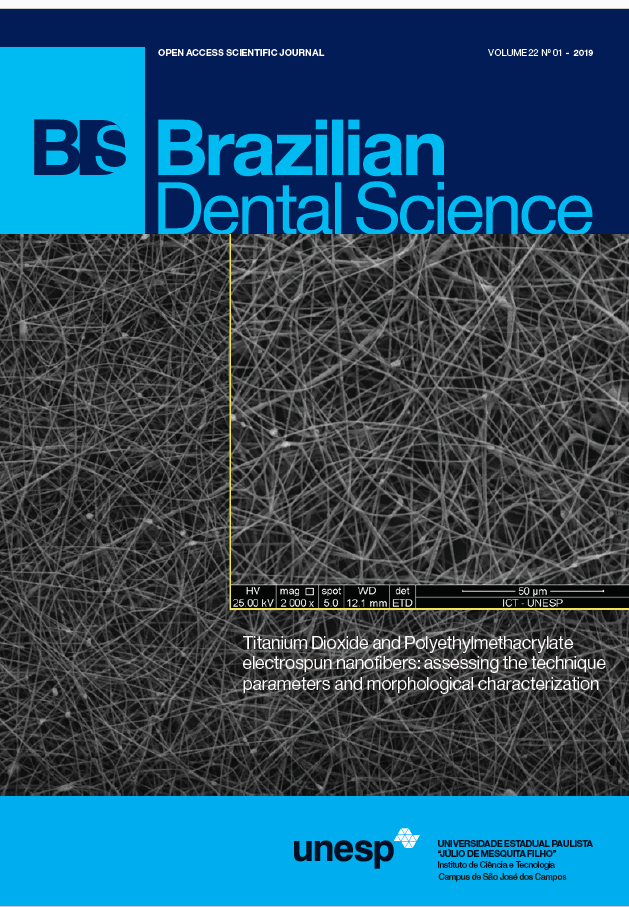Systemic Health Characteristics and Self-Reported Xerostomia among Nursing Facility Residents in Iowa-US and Sao Paulo-Brazil
DOI:
https://doi.org/10.14295/bds.2019.v22i1.1677Abstract
Objective: To describe and compare potential differences in systemic health characteristics and xerostomia among residents in American and Brazilian nursing facilities (NF). Material and Methods: This secondary analysis used data from a study in NF located in Iowa-USA (n=81) and Sao Paulo (SP)-Brazil (n=119). Recorded data included demographics, medications, comorbid conditions, and self-reported xerostomia. Results The Iowa group mean age was 82.1 years (±12.9), 60.5% were females, and 100% were white, whereas the SP group mean age was 76.4 years (±8.7), 47.9% females, most participants identified as either white (42.0%) or as more than one race (45.4%). The median number of comorbid conditions and medications in the Iowa were 9 and 12, respectively, as compared to 2 and 6 in SP. Most common comorbidities in Iowa were hypertension, dementia (including Alzheimer), and depression. In SP, they were hypertension, unspecified diabetes mellitus (including type 2), and Parkinson. Most common prescription medications in Iowa were acetaminophen, acetylsalicylic acid, and magnesium hydroxide, while in SP, they were omeprazole, acetylsalicylic acid, and losartan. Xerostomia was reported by 32.1% (Iowa) and 59.7% (SP) of the participants. There was no association between age and dry mouth sensation in either Iowa (p=0.480) or SP (p=0.130) samples. However, there was an association between total medications and dry mouth sensation in Iowa (p=0.040), but not in SP (p=0.075) Conclusions: Iowans presented with higher numbers of comorbidities and prescription medications, however xerostomia was reported in a greater percentage in SP. Xerostomia was associated to higher number of medications in Iowa, but not in SP.
Keywords
Xerostomia; Aged; frail elderly; Nursing homes.
Downloads
Downloads
Published
How to Cite
Issue
Section
License
Brazilian Dental Science uses the Creative Commons (CC-BY 4.0) license, thus preserving the integrity of articles in an open access environment. The journal allows the author to retain publishing rights without restrictions.
=================




























